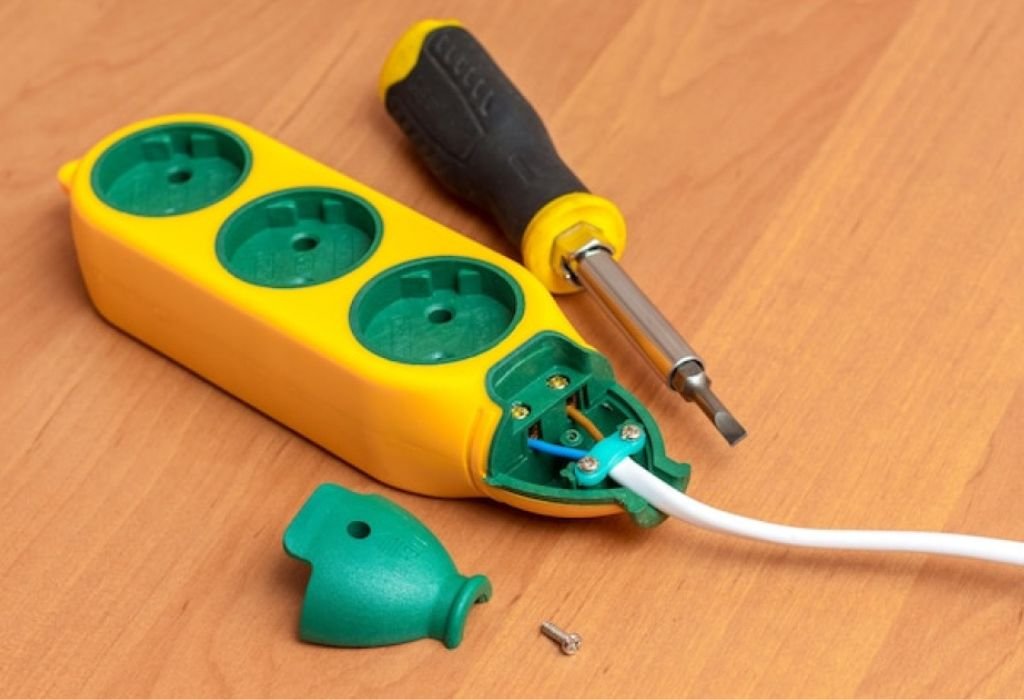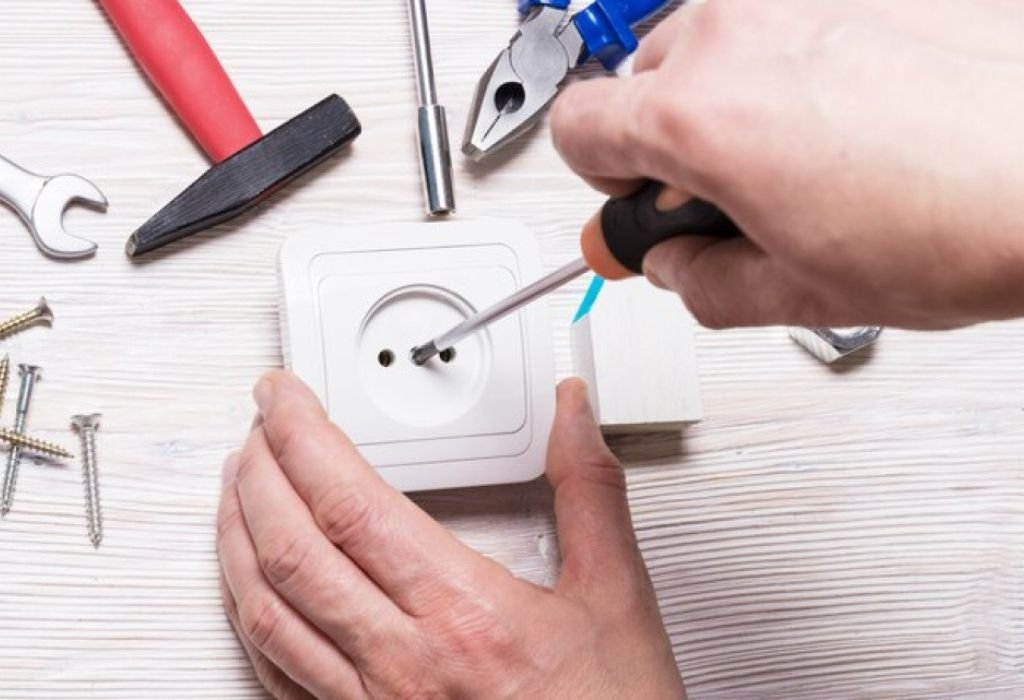A weekend project can turn frustrating when a stubborn bolt refuses to budge.
The thought quickly arises: can I use regular sockets with an impact driver to unleash more torque and finish the job faster? It feels like a simple shortcut, but the decision can have serious consequences.
Regular chrome sockets are designed for steady hand tools, not the hammering bursts of power delivered by an impact driver.
Chrome vanadium sockets are hard and polished, but their brittleness makes them prone to cracking when exposed to sudden torque spikes.
Impact sockets, by contrast, are made from chrome molybdenum steel with thicker walls and a dull finish that absorbs repeated shock.
The safety risk is real. A cracked socket can send shards flying with dangerous force, potentially damaging both the user and the tool.
According to Family Handyman, brittle failures under high torque are one of the most common tool-related hazards when using the wrong socket type.
The temptation comes from cost and convenience. Regular sockets are already in the toolbox, while buying a new set feels unnecessary.
Yet impact-rated sockets are designed to handle blows per minute that cordless and pneumatic impacts deliver, often exceeding 2,000 in-lbs of torque on modern drivers (Pro Tool Reviews).
This guide explores whether you can safely use regular sockets with an impact driver, the risks involved, and why choosing the right impact-rated set is critical. Readers will discover differences in design, materials, safety, and long-term value to avoid costly or dangerous mistakes.
Impact Driver Forces vs. Socket Design — Why It Matters

Impact drivers are not like hand tools. They use rapid rotational blows combined with high torque to break free fasteners or drive bolts into place.
This hammering force creates torque spikes that standard sockets are not designed to handle. Regular chrome sockets may look sturdy, but their brittle design makes them vulnerable under repeated shock.
Impact sockets, on the other hand, are engineered for these forces. They use thicker walls and a different heat treatment to absorb energy instead of cracking.
The difference in build is the main reason why safety experts warn against mixing regular sockets with impact tools. Using the wrong type risks not just damage but injury.
Can I use regular sockets with an impact driver?
They will fit, but they are not built for impacts and can shatter under stress.
What makes impact sockets stronger?
They are made from chrome molybdenum steel with thicker walls and a dull finish.
Why do regular sockets fail under impacts?
They are harder but more brittle, so torque spikes can cause fractures.
Are there safety standards for sockets?
Yes, ASME/ANSI B107 standards specify performance requirements for impact-rated tools.
Can impact sockets be used on hand tools too?
Yes, impact sockets are safe for both impact drivers and ratchets.
Material & Build — CR-MO vs. CR-V, Wall Thickness, Finish
Sockets differ in both material and treatment. Regular sockets typically use chrome vanadium steel (CR-V), while impact sockets use chrome molybdenum steel (CR-MO).
CR-MO is more ductile, meaning it bends slightly under stress rather than shattering. CR-V is harder but less forgiving, making it unsafe for high-impact use.
Impact sockets also have thicker walls. This geometry distributes torque and reduces the likelihood of cracks forming at the corners.
The finish also matters. Impact sockets use a black oxide coating to prevent flaking, unlike chrome plating which can peel under impacts.
What do “CR-MO” and “CR-V” mean?
They describe the alloys used; CR-MO is chrome molybdenum, CR-V is chrome vanadium.
Which is better for impact tools?
CR-MO is tougher and designed for high-shock torque loads.
Why are impact sockets black?
The black oxide finish improves grip and avoids flaking hazards.
Are impact sockets always thicker?
Yes, they are built with thicker walls for added durability.
Does material affect lifespan?
Yes, CR-MO sockets last significantly longer on impact drivers.
Safety Risks of Using Regular Sockets on an Impact Driver
Safety is the main reason manufacturers advise against using chrome sockets with impacts. The risk of shattering is higher than most users expect.
Flying fragments can cause severe injury or damage surrounding components. Even eye protection does not eliminate the hazard.
Beyond injury, broken sockets can damage the tool itself. The anvil, detent pin, or bearings inside the impact driver can be scarred or cracked by sudden failures.
What is the worst-case scenario?
The socket cracks and ejects metal shards at high speed.
Can it damage the tool?
Yes, the impact driver’s internal parts can suffer permanent damage.
Is PPE enough to make it safe?
No, while PPE is important, it does not prevent socket failure.
Does misuse void warranties?
Yes, using non-rated sockets can void tool warranties.
Do torque spikes matter?
Yes, even small impacts can exceed the brittle threshold of chrome sockets.
Choosing the Right Impact Sockets — Sizes, Drive Fits, Standards
Selecting the right socket set ensures safety and efficiency. Impact sockets are available in metric and SAE sizes with drive sizes from 1/4″ to 1″.
The most common drive sizes for impact drivers are 1/4″, 3/8″, and 1/2″. Matching drive size to tool is essential for safe operation.
Quality sets comply with ASME/ANSI B107 standards. These standards guarantee sockets meet minimum strength and performance ratings for impact use.
Which drive sizes are common for impact drivers?
1/4″, 3/8″, and 1/2″ are the most frequently used.
What’s the difference between shallow and deep sockets?
Shallow sockets fit tight spaces, while deep sockets clear long studs.
Are standards important?
Yes, ASME/ANSI standards confirm sockets are tested for impact loads.
Do impact sockets have retention features?
Yes, they use pin holes or detent grooves for secure fitment.
Which sizes do mechanics need most?
Both SAE and metric are needed, but metric dominates automotive work.
Adapters, Extensions, and Universal Joints — What’s Safe?
Accessories also need to be impact-rated. A regular chrome adapter is just as risky as a regular socket.
Impact-rated adapters, extensions, and universal joints are built with the same CR-MO material. They resist twisting and cracking under repeated shocks.
Using a single non-rated part in the chain creates a weak point that can fail under load. Always ensure every accessory is marked as impact-rated.
Can I use a chrome adapter on an impact driver?
No, only impact-rated adapters should be used.
Will wobble joints survive impacts?
Only if designed and rated for impact service.
Are magnetic sleeves safe?
Yes, if marked as impact-rated and used properly.
Do thin-wall sockets exist for impacts?
Yes, special thin-wall impact sockets are made for wheel service.
Are extensions safe for high torque?
Yes, when impact-rated and not excessively long.
Real-World Use Cases — Wheels, Rusted Fasteners, Construction
Impact sockets show their value in heavy-duty applications. They are standard in automotive, construction, and industrial settings.
Wheel lug nuts are a prime example. Using the correct thin-wall impact socket avoids both safety risks and wheel damage.
Rusted fasteners are another area where impacts excel. The pulsing torque helps break free corroded bolts without rounding heads.
Are wheel lugs safe with impact sockets?
Yes, use thin-wall impact sockets to avoid rim damage.
Can impacts free rusted bolts?
Yes, the hammering action helps break static friction.
Should torque sticks be used?
Yes, torque sticks prevent over-tightening when reinstalling wheels.
Do color-coded sockets help?
Yes, they speed size selection and reduce mistakes.
What industries rely on impact sockets most?
Automotive, aerospace, shipbuilding, and construction use them daily.
Care, Inspection, and Replacement — Extending Socket Life

Even impact sockets wear out. Regular inspection keeps them safe and reliable.
Check for cracks, wear on corners, and stretched retention features. Discard any socket that shows signs of fatigue.
Light lubrication and cleaning prevent rust and extend service life. Black oxide finishes benefit from occasional oiling.
How often should sockets be inspected?
Before each use, especially under heavy loads.
When should a socket be replaced?
At the first sign of cracks, warping, or worn corners.
Does finish matter for longevity?
Yes, black oxide helps prevent rust and flaking.
Can impact sockets be used on ratchets?
Yes, they are safe on both impact tools and hand tools.
How long do impact sockets last?
They can last years with proper use and care.
Myths vs. Facts — Clearing Up Common Misconceptions
There are many myths about sockets and impact tools. Clearing them up prevents unsafe practices.
One myth is that chrome sockets are fine if used gently on an impact. In reality, even low torque can cause them to crack.
Another myth is that CR-V is stronger than CR-MO. CR-V is harder, but CR-MO is tougher and better suited for shock loads.
“Light throttle makes chrome sockets safe.”
False, torque spikes still occur and can shatter chrome sockets.
“CR-V is better than CR-MO for impacts.”
False, CR-MO is tougher and built for impact loads.
“Impact sockets are only for pneumatic tools.”
False, cordless drivers also require impact-rated sockets.
“ASME standards don’t cover sockets.”
False, ASME/ANSI B107 covers socket safety and durability.
“Impact sockets always last longer.”
True under impacts, but quality and care still matter.
Conclusion — The Safe, Smart Answer
So, can I use regular sockets with an impact driver? The short answer is no if safety and tool longevity matter.
Impact sockets are engineered to withstand hammering torque, while regular sockets risk shattering and causing injury. Investing in the right set protects both tools and people.
What is the best next step?
Buy an impact-rated socket set in the sizes you use most.
Can impact sockets replace regular sockets?
Yes, they can be used safely on both impacts and hand ratchets.
Is buying impact sockets worth the cost?
Yes, the added safety and durability outweigh the initial expense.
What final safety rule applies?
Always wear eye protection and replace damaged sockets immediately.
Final advice?
Use regular sockets for hand tools and impact sockets for impacts to stay safe and efficient.

I’m John F. Nicholas, the founder, lead writer, and drill enthusiast behind 101drill.com. With years of hands-on experience in power tools and DIY projects, I created this platform to share practical knowledge, expert tips, and real-world insights to help others master the art of drilling.
